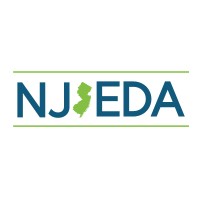Issues with cash flow often make it challenging for small businesses to meet payroll demands. In fact, according to a recent study, 32% of small business owners have paid their employees late due to cash flow problems. Payroll financing, also known as payroll funding, has become essential to solve for payroll shortfalls. Payroll financing helps small business owners maintain their workforce without the worry of losing valuable team members.
Payroll financing offers immediate access to funds, ensuring businesses can meet payroll obligations even when cash flow is tight. This is particularly valuable for businesses that need to pay employees before receiving customer payments. For example, if a business offers 30- or 60-day payment terms on invoices, there may be a gap in cash flow when it’s time to run payroll. Payroll funding bridges this gap by providing a cash advance to cover employee salaries, ensuring payroll runs smoothly while awaiting customer payments. This support can make all the difference in keeping business steady and the team secure.
If you are considering payroll financing, here are 5 benefits to explore:
1. Ensure Consistent Cash Flow
Payroll financing takes the uncertainty out of cash flow by ensuring funds are available to meet payroll obligations each week, eliminating stressful delays in paying employees. Payroll financing provides peace of mind that payroll will be met, so business leaders can focus on the business.
2. Support Business Growth
With payroll financing, businesses can confidently expand into new markets and increase hiring without worrying about the immediate cash flow impact. This reliable access to capital enables businesses to pursue new opportunities they might otherwise have to pass up due to cash flow constraints.
3. Maintain a Debt-Free Balance Sheet
Unlike traditional bank loans, payroll financing is not recorded as debt on a balance sheet. It provides the necessary cash without increasing liabilities, allowing businesses to finance growth without burdening the business with debt.
4. Enable Timely Bill Payments
By removing the wait for customer payments, payroll financing helps ensure that bills can be paid on time. This consistent cash flow can even make it possible to create a rainy-day fund, adding an extra layer of financial stability.
5. Facilitate Business Investment
With access to steady working capital, payroll financing enables businesses to reinvest in their growth. Whether it’s upgrading technology, enhancing tools, or implementing efficiencies, payroll financing supports the business in staying competitive and efficient as it grows.
When it comes to navigating payroll demands, payroll financing offers a viable solution, while providing the flexibility needed to support growth and stability. By eliminating the stress associated with cash flow gaps, businesses can focus on their core operations and seize new opportunities without the burden of additional debt.
If you think payroll financing might benefit your company, we have access to a partner who can provide a solution. Schedule a call with us today to learn more. Your business’s financial health and growth depend on it!









